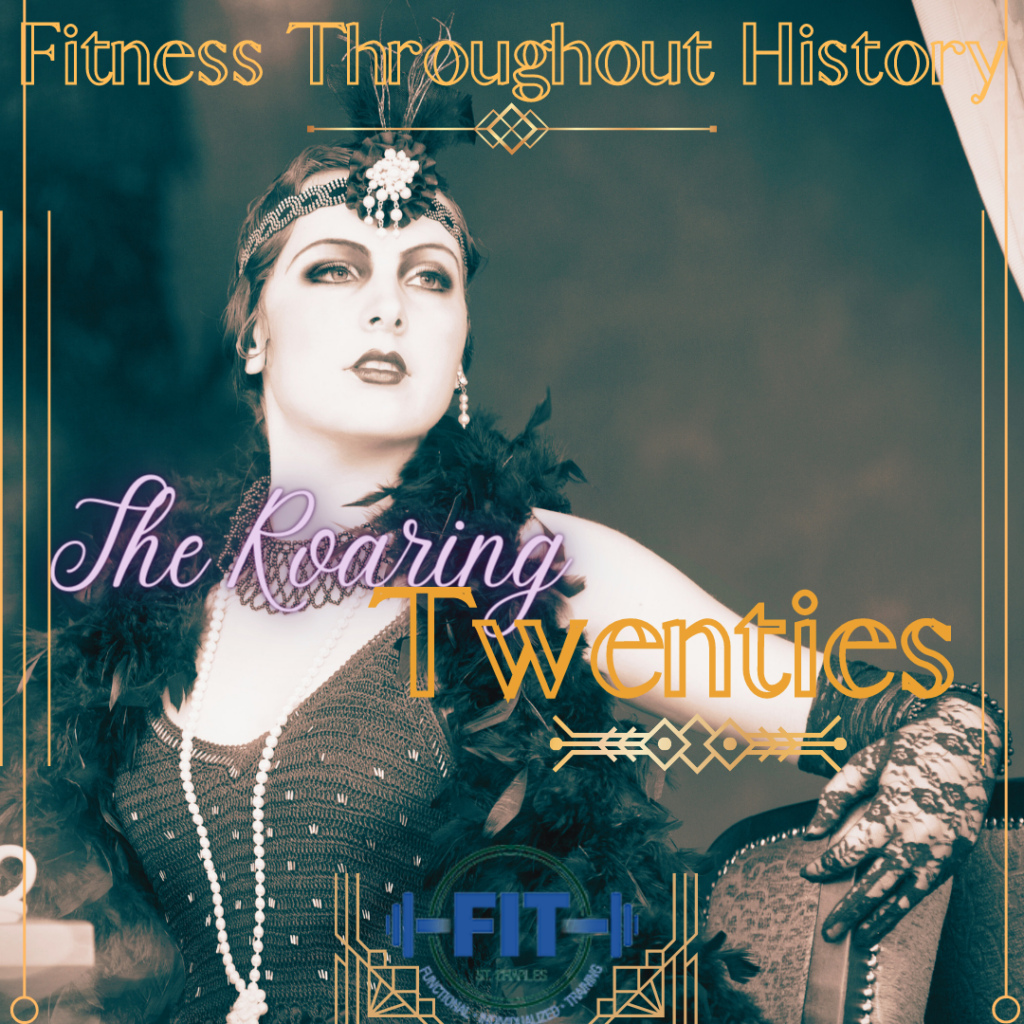
Welcome back to our series on the history of fitness! Last week we talked about the World War I era, and the heightened interest by the United States government and the American people in the importance of fitness, but today we will discuss the era directly following that and the decline in that interest. Welcome to the Roaring Twenties!
Throughout history, we have observed a pattern- after a war, society tends to relax. People become less interested in fitness and instead focus on “enjoying life” and more leisure oriented activities (here at Fit, we know that exercise can be fun, adds to overall relaxation, and an increase in your enjoyment of life, but sometimes it’s hard to remember to see the bigger picture). Such was the case during the 1920’s.
We all know about the Roaring Twenties- it was a time in the United States in which, in conjunction and partially because of an economic boom following the war, speakeasies, flappers, jazz, and excessive lifestyles reigned supreme. For the first time in history, more Americans lived in cities than in rural areas. With denser urban population came an explosion in culture, particularly music and the arts. Prohibition did not stop many parts of society from indulging in alcohol, and bootleggers provided speakeasies with the moonshine they needed to keep the party going. A focus on fitness fell by the wayside as people focused on luxury and social standing.
This doesn’t mean that everyone was ignoring the importance of a fitter lifestyle, however- balance in all things is always important! Back in 1923 Dr. C. Ward Crampton published an article about the importance of maintaining good posture, flexibility, and one’s overall health. He wrote, “Exercise, on the other hand, is activity used to stimulate repair and growth. It provides variety, a relief from the labor activity, of whatever nature that labor may be. Its chief benefits accrue after the exercise is over. Exercise causes waste, but it stimulates and cleans the tissue. Rest immediately thereafter provides opportunity for repair and up-building, restoration and readjustment.” Dr. Crampton published illustrations of what he considered good measures of fitness and stretches and exercises one could incorporate into their daily lives, regardless of their jobs and current fitness levels, but his advice was largely ignored by the American public.
Although the Roaring Twenties was an important part of American culture and is often romanticized today, the overall health of the American people declined during those years. An important take-away from this era is this- it’s ok to party sometimes, but don’t forget to hit the gym!
